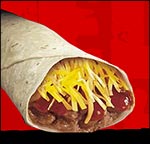 The classic "chicago style" hot dog (Lincoln Park, Chicago Il. 7/20/07). Replete with tomatoes, jalapeno peppers, pickle quarters, onions and
The classic "chicago style" hot dog (Lincoln Park, Chicago Il. 7/20/07). Replete with tomatoes, jalapeno peppers, pickle quarters, onions and warm sauerkraut on a mustard smothered vienna beef frank, it redefines the laymans impression of the hot dog.
Of all the things that Germans have done, we can thank them above all for knowing how to use their meat. Germany, Poland and other central European countries are well known for the contemporary sausage, which is basically ground animal meat and assorted spices in an edible casing. Sausages are made of edible and tasty meat that would not usually be considered for eating alone… unless you’re East Asian. For example, I was eating some tasty pork the other day, but I had a gag-reflex when my parents mentioned that it was pig rump (Porkazz).
Sausages supposedly originated from Sumerians in the B.C.’s, and the Greeks loved sausage so much that Epicharmus, a noted comedic writer, had a play named The Sausage. There are so many dirty jokes that I could make here about the Greeks and sausage, but I will refrain. From Greek and Roman societies, the tubular delight found acclaim all over modern-day Europe, with many specialties and a love for sausages with sausage festivals popping up around the continent since the time of Emperor Nero. Hehehe, so many immature jokes to refrain from saying.
Sausages have been called “dogs”, believed to have come from accusations that dog meat was being included in sausages in the 19th century.
And now, Hot Dogs. A quick history is taken from wikipedia, which explains it’s social history relating to America well enough.
“The city of Vienna traces the lineage of the hot dog to the wienerwurst or Viennese sausage, the city of Frankfurt to the frankfurter wurst, which it claims was invented in the 1480s; the hot dog has also been attributed to Johann Georghehner, a 17th century butcher from the Bavarian city of Coburg who is said to have invented the "dachshund" or "little-dog" sausage and brought it to Frankfurt.[1]
Around 1870 on Coney Island, a German immigrant named Charles Feltman began selling sausages in rolls.[2][3][4]
The association between hot dogs and baseball may have began as early as 1893 with Chris von der Ahe, a German immigrant who owned not only the St. Louis Browns, but also an amusement park, beer garden and brewery near Sportsman's Park, where he sold his beer.[7]”
Hot dogs differ from other sausages because they are relatively small sausages and are composed mainly of beef and pork without spices. The modern day hot dog is generally had with a bun and a variety of condiments, vastly differing by region. Common condiments are mustard, relish, chili, ketchup, onions, etc.
Hot Dogs have received unfair criticisms over the years for many reasons. The common perception is that Hot dogs are a mystery meat, with origins unknown. It’s made from perfectly normal beef and pork parts. It’s no porterhouse, but it still has the same nutritional value. People will balk at eating hot dogs when they realize that some hot dog skins are made from animal intestines (except for Cantonese-Chinese people, well known for their amazing dim-sum intestine dishes, like cow tripe), although it’s very small amounts and not bad at all.
Many Americans have not had good experiences eating hot dogs, eating them at gas stations or 7-11s on the road or in a hurry, eating Gordon Food Service hot dogs in elementary school, boiling them instead of grilling them, eating them with crappy, processed buns, being incapable of determining the right combination of toppings. If you’ve eaten a kosher hot dog, you’ve had a bad experience. Meat quality is questionable at times, to top it off.
The only way to experience a good hot dog is to eat it at a local stand or restaurant that is known for it’s hot dogs. It has to be authentic and not just a hunger filler. When talking about Hot Dogs you have to acknowledge that there is no comprehensive “right” way to eat Hot Dogs. Below are a few general(ly) correct/incorrect observations I have made.

In the midwest, if they serve Vienna Beef hot dogs, you’re in the right place.
If they have you put your own condiments on the hot dog, you’re in the wrong place, with a few exceptions. Many people can’t cognitively decide what to wear in the morning, and the same usually applies with hot dog condiments.
Truthfully, the truth is in the condiments: a good combination of flavors and textures are necessary to augment and elevate the eating experience. Areas with a hot dog history have their own preferences and combinations of condiments, as evidenced on this page of Regional Hot Dog Variants (God bless you, Wikipedia). Read the part about the French version and try not to think about sexual innuendo. I dare you.
Interesting Tidbits:
-American Hot Dogs are made small enough so that kids can eat it, though ironically enough, the hot dog is big enough to perfectly lodge in a 6 year-olds throat and choke him/her effectively.
-Mickey Mouse’s first spoken words were "Hot Dogs!"
-A Filipino Basketball Assosciation team used to be named the “Purefoods Tender Juicy Hotdogs” before changing their name to the “Purefoods Tender Juicy Giants” (They are owned by purefoods, naturally)
- The longest hot dog created was 60m (196.85 ft), and rested within a 60.3m bun. A Japanese meat supplier made it for the all-japan association’s 50th anniversary in 2006.
- On July 22, 2007, Japanese competitive eater Takeru Kobayashi seriously injured his jaw eating hot dogs during training. He stated that he could only open his jaw about the width of a fingertip.

Kobayashi is crazy retarded, but well fed.

 =
=

























